Social neuroscience and health: neurophysiological mechanisms linking social ties with physical health
Although considerable research has shown the importance of social connection for physical health, little is known about the higher-level neurocognitive processes that link experiences of social connection or disconnection with health-relevant physiological responses. Here we review the key physiological systems implicated in the link between social ties and health and the neural mechanisms that may translate social experiences into downstream health-relevant physiological responses. Specifically, we suggest that threats to social connection may tap into the same neural and physiological 'alarm system' that responds to other critical survival threats, such as the threat or experience of physical harm. Similarly, experiences of social connection may tap into basic reward-related mechanisms that have inhibitory relationships with threat-related responding. Indeed, the neurocognitive correlates of social disconnection and connection may be important mediators for understanding the relationships between social ties and health.
This is a preview of subscription content, access via your institution
Access options
Subscribe to this journal
Receive 12 print issues and online access
206,07 € per year
only 17,17 € per issue
Buy this article
- Purchase on SpringerLink
- Instant access to full article PDF
Prices may be subject to local taxes which are calculated during checkout
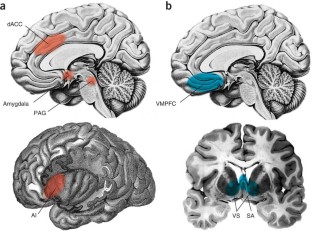
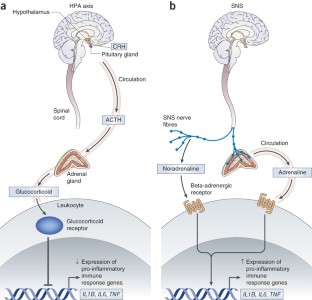
Similar content being viewed by others
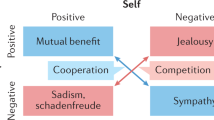
Dynamic influences on the neural encoding of social valence
Article 12 July 2022
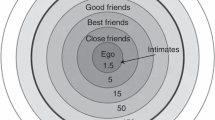
Social isolation and the brain in the pandemic era
Article 18 October 2022
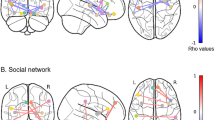
The neurocognitive impact of loneliness and social networks on social adaptation
Article Open access 25 July 2023
References
- Holt-Lunstad, J., Smith, T.B. & Layton, J.B. Social relationships and mortality risk: a meta-analytic review. PLoS Med.7, e1000316 (2010). ArticleGoogle Scholar
- Miller, G., Chen, E. & Cole, S.W. Health psychology: developing biologically plausible models linking the social world and physical health. Annu. Rev. Psychol.60, 501–524 (2009). ArticleGoogle Scholar
- Irwin, M.R. & Cole, S.W. Reciprocal regulation of the neural and innate immune systems. Nat. Rev. Immunol.11, 625–632 (2011). ArticleCASGoogle Scholar
- Finch, C.E. The Biology of Human Longevity: Inflammation, Nutrition and Aging in the Evolution of Life Spans (Academic Press, Boston, 2007).
- Meyer-Lindenberg, A. & Tost, H. Neural mechanisms of social risk for psychiatric disorders. (this volume)
- Cacioppo, J.T. & Hawkley, L.C. Perceived social isolation and cognition. Trends Cogn. Sci.13, 447–454 (2009). ArticleGoogle Scholar
- Eisenberger, N.I., Lieberman, M.D. & Williams, K.D. Does rejection hurt: an fMRI study of social exclusion. Science302, 290–292 (2003). ArticleCASGoogle Scholar
- Eisenberger, N.I. The pain of social disconnection: examining the shared neural underpinnings of physical and social pain. Nat. Rev. Neurosci. (in the press).
- Inagaki, T.K. & Eisenberger, N.I. Neural correlates of giving support to a loved one. Psychosom. Med.74, 3–7 (2012). ArticleGoogle Scholar
- Delgado, M.R., Olsson, A. & Phelps, E.A. Extending animal models of fear conditioning to humans. Biol. Psychol.73, 39–48 (2006). ArticleCASGoogle Scholar
- Bosch, J.A. et al. A general enhancement of autonomic and cortisol responses during social evaluative threat. Psychosom. Med.71, 877–885 (2009). ArticleCASGoogle Scholar
- Dickerson, S.S. & Kemeny, M.E. Acute stressors and cortisol responses: a theoretical integration and synthesis of laboratory research. Psychol. Bull.130, 355–391 (2004). ArticleGoogle Scholar
- Lundberg, U. & Frankenhaeuser, M. Pituitary-adrenal and sympathetic-adrenal correlates of distress and effort. J. Psychosom. Res.24, 125–130 (1980). ArticleCASGoogle Scholar
- Cole, S.W. et al. Social regulation of gene expression in human leukocytes. Genome Biol.8, R189 (2007). ArticleGoogle Scholar
- Miller, G.E. et al. A genomic fingerprint of chronic stress in humans: blunted glucocorticoid and increased NF-kappaB signaling. Biol. Psychiatry64, 266–272 (2008). ArticleCASGoogle Scholar
- Sloan, E.K. et al. Social stress enhances sympathetic innervation of primate lymph nodes: mechanisms and implications for viral pathogenesis. J. Neurosci.27, 8857–8865 (2007). ArticleCASGoogle Scholar
- Mobbs, D. et al. From threat to fear: the neural organization of defensive fear systems in humans. J. Neurosci.29, 12236–12243 (2009). ArticleCASGoogle Scholar
- Mobbs, D. et al. Neural activity associated with monitoring the oscillating threat value of a tarantula. Proc. Natl. Acad. Sci. USA107, 20582–20586 (2010). ArticleCASGoogle Scholar
- Phelps, E.A., Delgado, M.R., Nearing, K.I. & LeDoux, J.E. Extinction learning in humans: role of the amygdala and vmPFC. Neuron43, 897–905 (2004). ArticleCASGoogle Scholar
- Milad, M.R. et al. A role for the human dorsal anterior cingulate cortex in fear expression. Biol. Psychiatry62, 1191–1194 (2007). ArticleGoogle Scholar
- Burgos-Robles, A., Vidal-Gonzalez, I. & Quirk, G.J. Sustained conditioned responses in prelimbic prefrontal neurons are correlated with fear expression and extinction failure. J. Neurosci.29, 8474–8482 (2009). ArticleCASGoogle Scholar
- Critchley, H.D. et al. Human cingulate cortex and autonomic control: converging neuroimaging and clinical evidence. Brain126, 2139–2152 (2003). ArticleGoogle Scholar
- Bandler, R., Keay, K.A., Floyd, N. & Price, J. Central circuits patterned autonomic activity during active versus passive emotional coping. Brain Res. Bull.53, 95–104 (2000). ArticleCASGoogle Scholar
- Critchley, H.D. Neural mechanisms of autonomic, affective and cognitive integration. J. Comp. Neurol.493, 154–166 (2005). ArticleGoogle Scholar
- Kross, E., Berman, M.G., Mischel, W., Smith, E.E. & Wager, T.D. Social rejection shares somatosensory representations with physical pain. Proc. Natl. Acad. Sci. USA108, 6270–6275 (2011). ArticleCASGoogle Scholar
- Eisenberger, N.I., Inagaki, T.K., Muscatell, K.A., Haltom, K.E.B. & Leary, M.R. The neural sociometer: brain mechanisms underlying state self-esteem. J. Cogn. Neurosci.23, 3448–3455 (2011). ArticleGoogle Scholar
- O'Connor, M.F. et al. Craving love? Enduing grief activates brain's reward center. Neuroimage42, 969–972 (2008). ArticleGoogle Scholar
- Panksepp, J. Affective Neuroscience: The Foundations of Human and Animal Emotions (Oxford Univ. Press, New York, 1998).
- Critchley, H.D., Corfield, D.R., Chandler, M.P., Mathias, C.J. & Dolan, R.J. Cerebral correlates of autonomic cardiovascular arousal: a functional neuroimaging investigation in humans. J. Physiol. (Lond.)523, 259–270 (2000). ArticleCASGoogle Scholar
- Gianaros, P.J., van der Veen, F.M. & Jennings, J.R. Regional cerebral blood flow correlates with heart period and high-frequency heart period variability during working-memory tasks: implications for the cortical and subcortical regulation of cardiac autonomic activity. Psychophysiology41, 521–530 (2004). ArticleGoogle Scholar
- Wager, T.D. et al. Brain mediators of cardiovascular responses to social threat. Part II. Prefrontal-subcortical pathways and relationship with anxiety. Neuroimage47, 836–851 (2009). ArticleGoogle Scholar
- Wang, J. et al. Perfusion functional MRI reveals cerebral blood flow pattern under psychological stress. Proc. Natl. Acad. Sci. USA102, 17804–17809 (2005). ArticleCASGoogle Scholar
- Eisenberger, N.I., Taylor, S.E., Gable, S.L., Hilmert, C.J. & Lieberman, M.D. Neural pathways link social support to attenuated neuroendocrine stress responses. Neuroimage35, 1601–1612 (2007). ArticleGoogle Scholar
- Slavich, G.M., Way, B.M., Eisenberger, N.I. & Taylor, S.E. Neural sensitivity to social rejection is associated with inflammatory responses to social stress. Proc. Natl. Acad. Sci. USA107, 14817–14822 (2010). ArticleCASGoogle Scholar
- Henke, P.G. The telencephalic limbic system and experimental gastric pathology: a review. Neurosci. Biobehav. Rev.6, 381–390 (1982). ArticleCASGoogle Scholar
- Milad, M.R. & Quirk, G.J. Neurons in medial prefrontal cortex signal memory for fear extinction. Nature420, 70–74 (2002). ArticleCASGoogle Scholar
- Atlas, L.Y., Bolger, N., Linquist, M.A. & Wager, T.D. Brain mediators of predictive cue effects on perceived pain. J. Neurosci.30, 12964–12977 (2010). ArticleCASGoogle Scholar
- Pruessner, J.C. et al. Deactivation of the limbic system during acute psychosocial stress: evidence from positron emission tomography and functional magnetic resonance imaging. Biol. Psychiatry63, 234–240 (2008). ArticleGoogle Scholar
- Thayer, J.F., Ahs, F., Fredrikson, M., Sollers, J.J. III & Wager, T.D. A meta-analysis of heart rate variability and neuroimaging studies: implications for heart rate variability as a marker of stress and health. Neurosci. Biobehav. Rev.36, 747–756 (2012). ArticleGoogle Scholar
- Buchanan, T.W. et al. Medial prefrontal cortex damage affects physiological and psychological stress responses differently in men and women. Psychoneuroendocrinology35, 56–66 (2010). ArticleGoogle Scholar
- Eisenberger, N.I. et al. Attachment figures activate a safety signal-related neural region and reduce pain experience. Proc. Natl. Acad. Sci. USA108, 11721–11726 (2011). ArticleCASGoogle Scholar
- Onoda, K. et al. Decreased ventral anterior cingulate cortex activity is associated with reduced social pain during emotional support. Soc. Neurosci.4, 443–454 (2009). ArticleGoogle Scholar
- Piferi, R.L. & Lawler, K.A. Social support and ambulatory blood pressure: an examination of both receiving and giving. Int. J. Psychophysiol.62, 328–336 (2006). ArticleGoogle Scholar
- Brown, S.L., Nesse, R.M., Vinokur, A.D. & Smith, D.M. Providing social support may be more beneficial than receiving it: results from a prospective study of mortality. Psychol. Sci.14, 320–327 (2003). ArticleGoogle Scholar
- Thomas, E. Forebrain mechanisms in the relief of fear: the role of the lateral septum. Psychobiol.16, 36–44 (1991). Google Scholar
- Uvnäs-Moberg, K. Oxytocin may mediate the benefits of positive social interaction and emotions. Psychoneuroendocrinology23, 819–835 (1998). ArticleGoogle Scholar
- Zubieta, J.K. et al. Regional mu opioid receptor regulation of sensory and affective dimensions of pain. Science293, 311–315 (2001). ArticleCASGoogle Scholar
- Insel, T.R. & Shapiro, L.E. Oxytocin receptor distribution reflects social organization in monogamous and polygamous voles. Proc. Natl. Acad. Sci. USA89, 5981–5985 (1992). ArticleCASGoogle Scholar
- Drolet, G. et al. Role of endogenous opioid system in the regulation of the stress response. Prog. Neuropsychopharmacol. Biol. Psychiatry25, 729–741 (2001). ArticleCASGoogle Scholar
- Bonnet, M.-P., Beloeil, H., Benhamou, D., Mazoit, J.-X. & Asehnoune, K. The mu-opioid receptor mediates morphine-induced tumor necrosis factor and interleukin-6 inhibition in toll-like receptor 2–stimulated monocytes. Anesth. Analg.106, 1142–1149 (2008). ArticleCASGoogle Scholar
Author information
Authors and Affiliations
- Department of Psychology, University of California, Los Angeles, California, USA Naomi I Eisenberger
- Division of Hematology-Oncology, Department of Medicine, University of California Los Angeles School of Medicine, Los Angeles, California, USA Steve W Cole
- Jonsson Comprehensive Cancer Center, University of California, Los Angeles, California, USA Steve W Cole
- Semel Institute for Neuroscience and Human Behavior, Cousins Center for Psychoneuroimmunology, University of California, Los Angeles, California, USA Steve W Cole
- University of California Los Angeles Molecular Biology Institute, Los Angeles, California, USA Steve W Cole
- Naomi I Eisenberger






